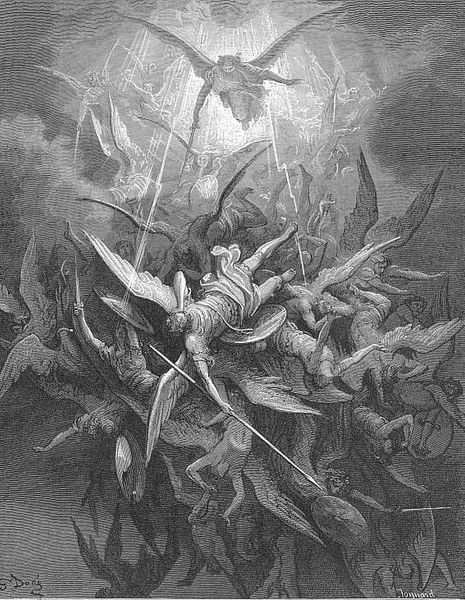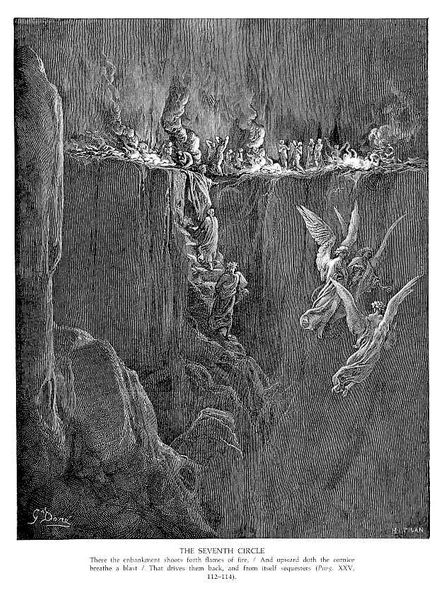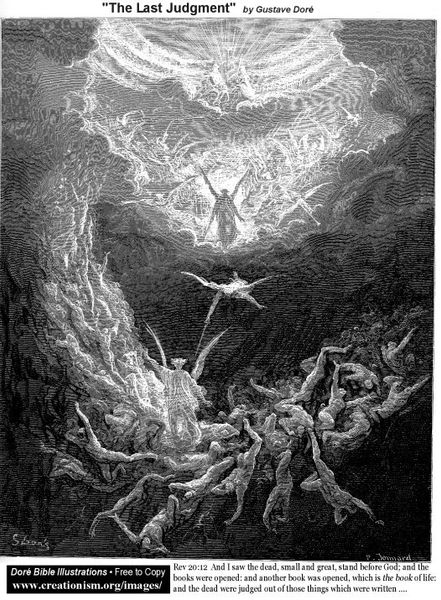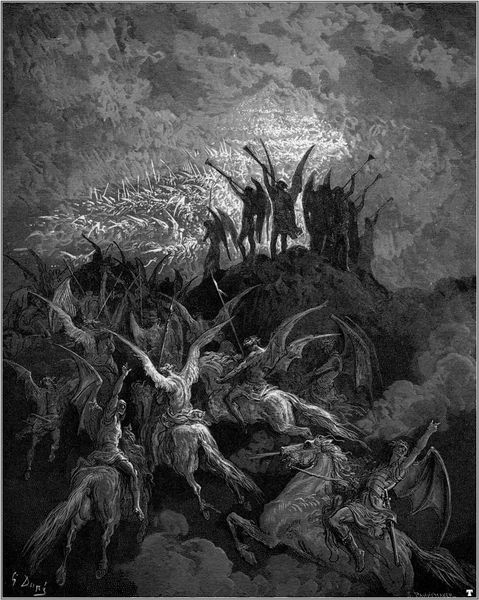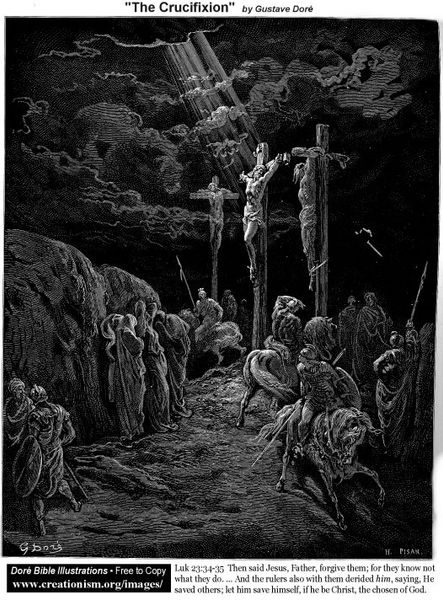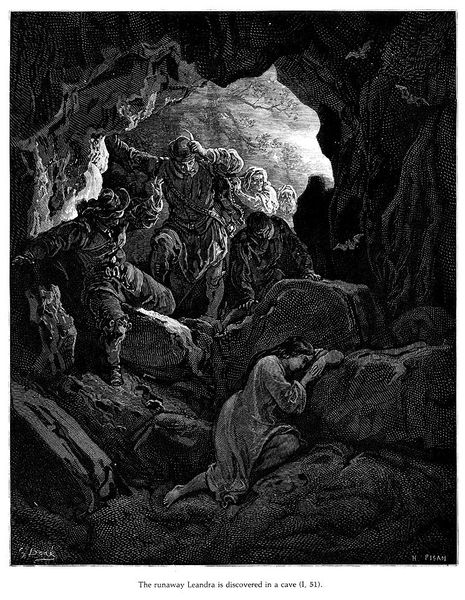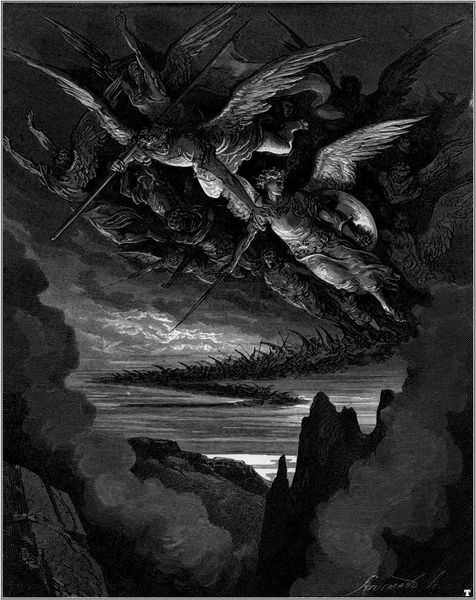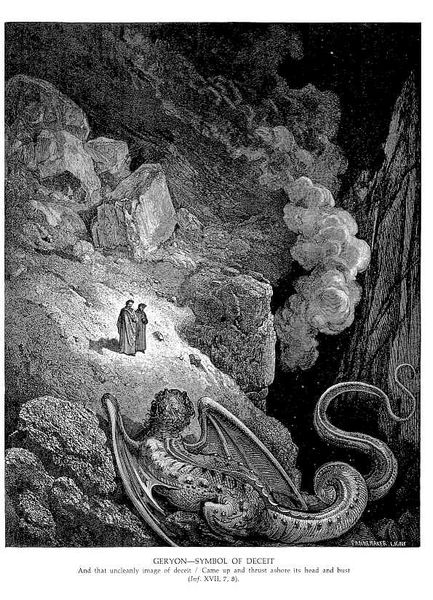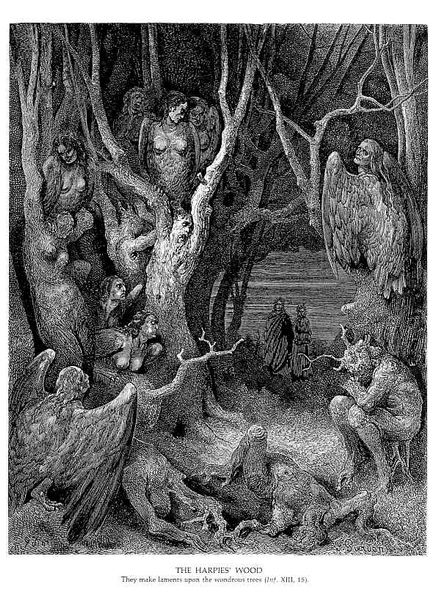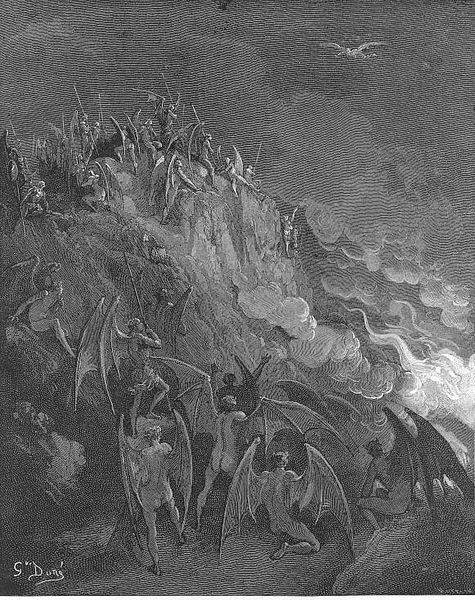
#
ink stage
#
halloween themed
#
natural shape and form
#
mother nature
#
war
#
leaf
#
fantasy flora
#
plant
#
intricate
#
arch
#
scratch sketch
#
botany
#
fantasy sketch
#
natural form
#
intricate and detailed
#
angel
#
monochrome
Copyright: Public domain
Gustave Doré made this engraving, likely in the 1860s, to illustrate Milton’s Paradise Lost. The medium is crucial here. Doré was a prolific printmaker, and the sharp contrasts of black and white are intrinsic to the process. Look closely, and you’ll see how he used varied densities of lines to create a sense of light and shadow, of volume and depth. This wasn’t just a technical exercise; Doré was a master of dramatic effect. Engraving is an artisanal skill. The image is incised into a metal plate, traditionally copper, using a tool called a burin. The labor-intensive nature of this process—every line meticulously carved by hand—contrasts sharply with the dark subject matter: the fall of the rebel angels into hell. There is a striking tension between the labor involved in producing such detail, and the chaos represented. This reminds us that even the most seemingly spontaneous and imaginative images are rooted in material practices. Understanding the 'how' of an artwork, allows a far richer appreciation of its 'what' and 'why.'
Comments
No comments
Be the first to comment and join the conversation on the ultimate creative platform.
